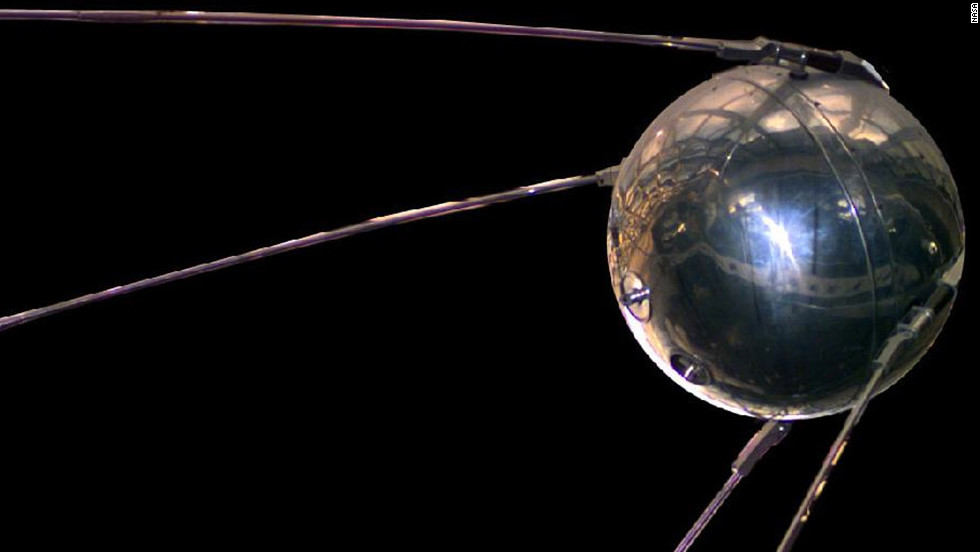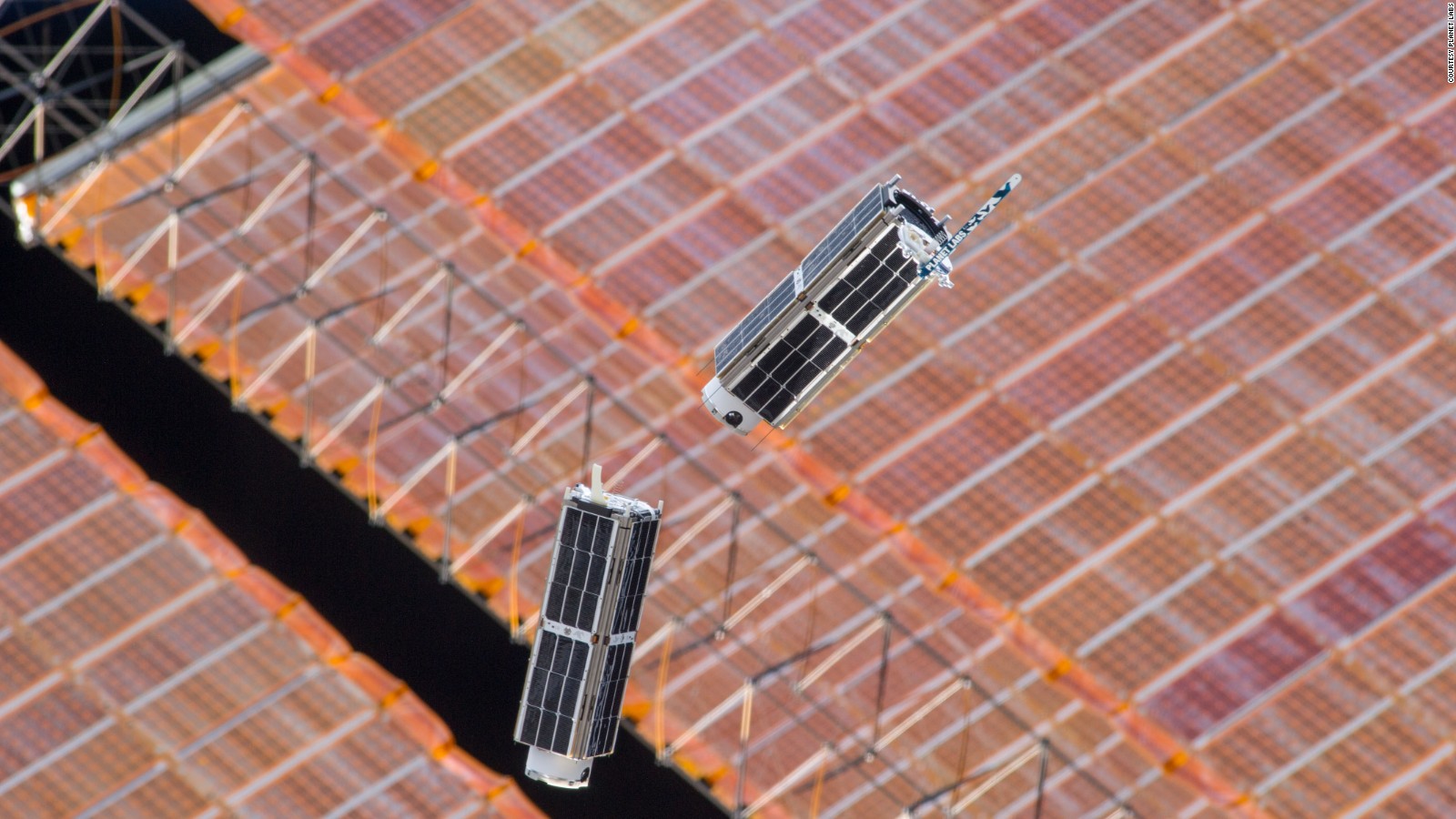As reported by CNN: How big is a satellite? As big as a washing machine? A car? A bus?


The average size of communication satellites orbiting the Earth is about that of a car. But there are extremes, such as the NROL-32, a spy satellite launched by the United States in 2010, which has an antenna spanning 328 feet across, or nearly 100 meters.
But among the flying giants, a new breed is spreading its wings.
Planet Labs, a Californian startup which had its beginnings in a garage in 2012, is pushing satellite miniaturization to its limits. Last year, they launched Flock 1, an array of 28 satellites that now constitutes the world's largest constellation of Earth imaging satellites.
They are called Doves, their mission is to map every inch of the planet, and each of them is no larger than a shoe box.
A Sputnik with a camera

The 1957 Sputnik satellite.
Chris Boshuizen is the co-founder and CTO of Planet Labs. His previous job title was "Space Mission Architect" for NASA. Not a bad starting point.
"As far as I remember, even as a kid I was always fascinated by the Moon and it seemed irrational to me that I couldn't go there," he told CNN's Nick Glass.
But for NASA, Chris was not planning multi-billion dollar missions to the Moon. Instead, he worked on the PhoneSat project, aimed at creating super-cheap satellites: "We literally built an Android smartphone, placed it in a box and put it in space. It was essentially like the Russian satellite Sputnik, but cheaper and able to take photos. It was Sputnik with a camera."
Learning to fly
That's how Boshuizen learned to be frugal when designing spacecraft. Instead of creating a complex, expensive and large machine, his approach is to build several cheap ones, which can act together like a swarm of insects.
"If any of our small satellites has any deficiencies, we can make up for that with quantity. And so the first application we came up with was Earth imaging: if we could put hundreds of cameras in space we could actually do real-time monitoring of the Earth and its climate, to help people make better decisions about their impact on the environment."
In 2012 he founded Planet Labs with a few friends, operating out of a garage in Cupertino, California. The perfect start for a startup.
Today, his mission statement is clearly posted on Planet Labs' website: "Fresh data from any place on Earth is foundational to solving commercial, environmental, and humanitarian challenges."
A shoe box in space

Boshuizen's satellites are solar powered, producing around 20W each.
Their name, Doves, started out as a joke: "I was having a conversation with one of our engineers, Mike Safyan, who was complaining that most military satellites have kind of evil names like Kestrel-Eye and Talon and Raptor. He said, 'Why don't we call ours Dove?' And it was just a joke, but what that means, how that speaks to our missions is profound, so instead of launching a constellation of satellites, we're launching a flock of doves."
The current flock of 28 will be joined by about 30 more over the next few months, with the goal of eventually reaching a constellation density of about 100.
That is, if fate doesn't intervene again.
White Dove down
On October 28th, 2014, an Antares rocket carrying 26 Doves destined for orbit exploded fourteen seconds after launch. Other than that, there were no injuries.
Rockets are fantastically complicated machines, and they fail: "I was watching the live-stream of the video, and I have this great photograph of everyone's jaw hanging open where they were like, 'What just happened?!', and I walked up to my co-founder Robbie and just gave him a big hug and he just said that this was bound to happen one day."
The setback has slowed down Planet Labs' technological progress, but the company still plans to offer their services commercially soon, and at prices containing "at least one zero less than a conventional satellite."
 |
| The Doves stored on the ground before launch. |
 |
| Aquaculture in the small town of Hanjia-Ri, South Korea. |
 |
| The Kashima industrial zone in the Ibaraki prefecture, Japan. |
 |
| Planet Labs have plans to bring their constellation up to around 120 Doves. |












